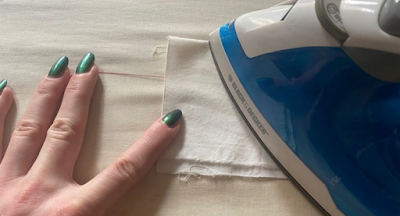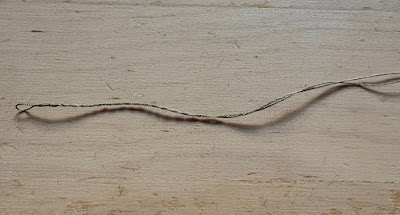This is the third in a series of standalone posts about what craftsmanship judges are looking for in cosplay competitions. In previous posts I have touched some on how choosing a character design commensurate in complexity with the skill division you are entering can have a major impact on your chances at winning, and my Holo the Wisewolf cosplay is a prime example for discussing this. How can you approach a simpler character design and still be successful in higher skill divisions? What are the limitations of that? These questions and more will be anwered if you read on! Let me know in the comments or my DMs what competition topics you would like me to cover next.
Please read before commenting: I make this series of posts as an educational resource. While I am happy ciriticizing my own past work, this is not an invitation for you to criticize my work, as this can still be hurtful to me. Please respect my vulnerability in making these posts by keeping your own criticisms of my craftsmanship to yourself. Thank you!
Character Name: Holo the Wisewolf
Series: Spice and Wolf by Isuna Hasekura
Competition/Year:Anime Boston 2015
Skill Category: Master
Awards won: 2nd Place Master Craftsmanship (Anime Boston 2015)
Accuracy
At its core, this costume is a Northern/Eastern-European-inspired ruffled outfit cinched with a corset, and of course Holo’s iconic wolf ears and tail. There’s not a lot to say about my interpretation of the design, because I made all of the pieces shown in the artwork, they’re all proportionally correct, and they’re all the right colors and shapes. My sole major alteration was to place Holo’s fox tail above her skirt, so that it would be visible.
I was told there was debate in judging about my choice to add footwear, because I added a pair of leather shoes that laced up my calves. In retrospect I find this strange because conventions (and local laws) usually require shoes and shoes are a safety/health consideration. So, this goes to show that you do not always know what will be a point of evaluation for your costume and it’s hard to know if there is bias or misunderstanding in the room.
Creativity
Holo’s design is a simple one at first glance, made up of flat colors and conventional silhouettes, but a blank canvas like this is excellent for making a design extra special. I was intentional about choosing beautiful fabrics: the red layer of the skirt and the bodice are made of a glowy silk shantung, and the green layer of the skirt is made of a block-printed Indian silk. I used a dense linen for the corset and then embroidered floral designs over it. I also added some small floral embroideries to the collar of the bodice. Overall this costume has a lot of tiny beaded details that make it a little more special. Most important, I think, is that I applied all my added details in a way that elevated the design in a holistic way rather than rather piecemeal as I had done it in the past, and that is part of what makes this costume stand out as a Master-level project.
Skill
The greatest challenge with a simpler design like Holo is in demonstrating a Master-division level of skill. I did draft all of my own patterns, and did my own wig styling, all things I could have either used patterns for or purchased ready-to-wear. The invisible zipper closures on the skirt and petticoat likely helped, and the smooth skintight fit of both my bodice and corset would also have been looked upon favorably by the judges. My drawstring bag necklace was easy on/off and neatly made. With some extra time spent sourcing materials, I was able to find a wig and fake fur that matched in color, so that the ears and tail visually blend perfectly with Holo’s hair as shown in the artwork. I was able to showcase a lot of skills with this costume, and I had clearly mastered them.
Cleanliness
There are few opportunities to remove points for cleanliness on this cosplay. When judging at the Master level especially I look at linings and seam finishes. For Holo my corset and bodice were fully lined, with hand finishings to make them as neat as possible. I had nice bias-bound edges on my corset. I French-seamed my skirt and also somehow installed an invisible zipper on said French seam. I could nitpick, but it would be on minor details.
Overview
While making my Holo cosplay I was able to take a fairly simple character design, execute it in a skillful and clean way, add some extra details to it in a way that honored and elevated the original design, and then place well in Master divison at a large competition. The quality and presentation of this cosplay were pretty spotless and it goes to show that skill mastery wins awards. I picked the skills I wanted to work on with this cosplay (embroidery) and mastered that while sticking to skills I was already strong in for the rest of the costume, with a few minor upgrades. As a judge I would the care have been impressed by the care taken in every aspect of this cosplay
It was not the most visually spectacular costume to see onstage but all of this is why it is so important to see judges’ award picks up close to fully undertand their choices. The main limitation on my Holo cosplay was the simple fact that there were not more opportunities to showcase skill compared to the cosplays that placed higher.
Character Design Choice Matters
I want this to be its own slide because this often is not mentioned in relation to strategy in cosplay competitions. To me this is a balancing act: you want to choose a character design that has ample opportunity to showcase your skill, you want to choose one that is suitably complex for the skill division or contest that you’re entering, but you also need to play to your own strengths and interests as a maker. The strongest design choice for a competition piece is the best costume that you can make with your skill, time, and resources. I can clearly identify times from my past where I did not have the ability to adequately confront one or more of these balancing factors and that is okay. It also doesn’t need to be everyone’s sole goal, to win. Things changed for me once I was happy just having my work seen onstage. If competition is not fun, if it has become stressful, that is a problem that needs addressing.
Personal Conclusions
The process of making and competing with my Holo cosplay taught me a lot of important lessons as a costumer and as a competitive cosplayer so in that way it was a major turning point. I gained a better understanding for what wins in competition, and it made my proud too, because winning at Anime Boston was my first cosplay achievement award from a major competition.
The Anime Boston competition has changed so much in the last ten years, I do not think my Holo would be as competitive there today. At any competition, your chances to receive an award are not dictated solely by your skill but also by who else shows up and I have been blown away by some of the costumes I have seen on the AB stage since my first award there in 2015.
As a point of trivia, Holo is my oldest still-fully-wearable and not-officially-retired cosplay.

























